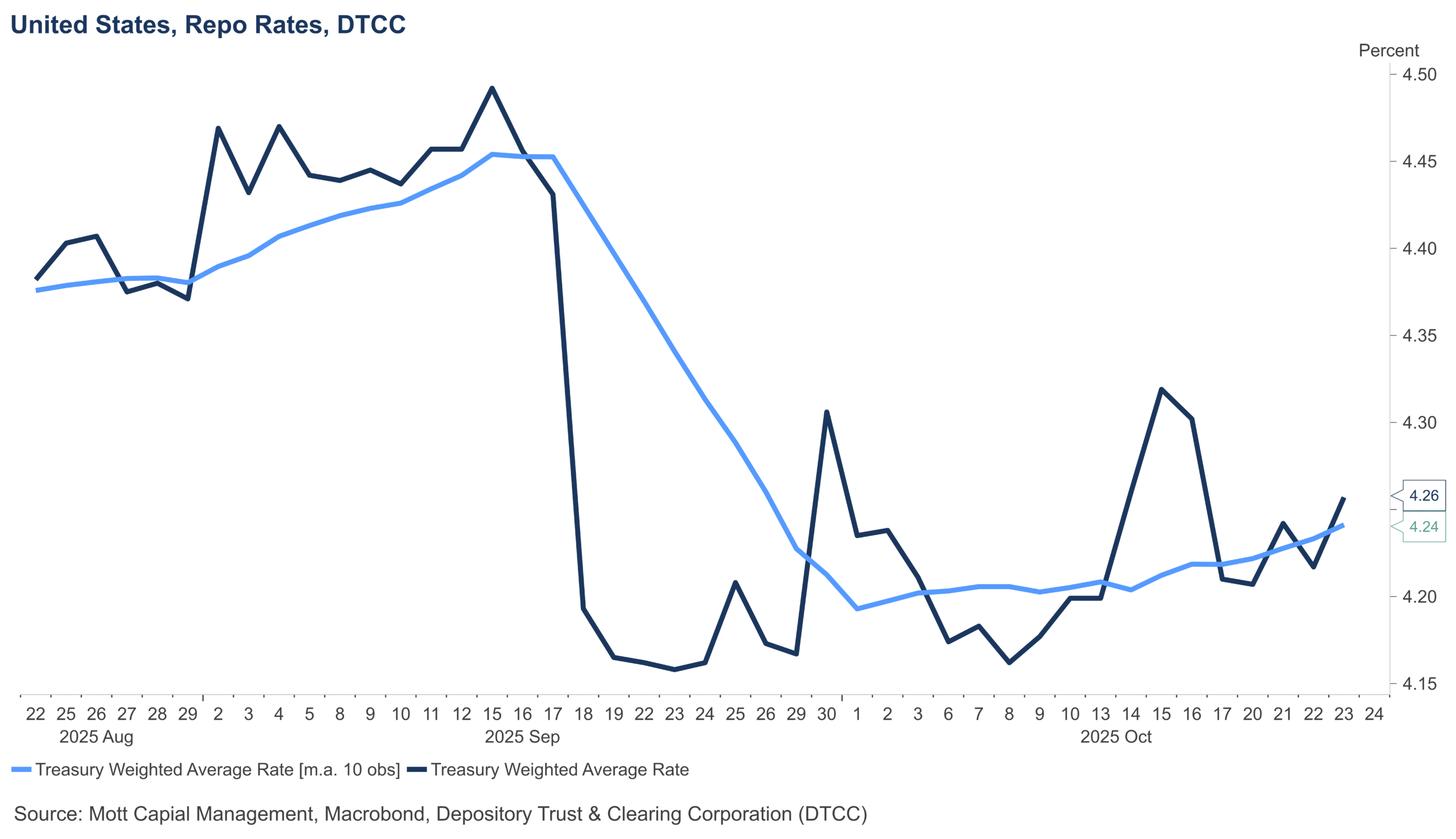Street Calls of the Week
The S&P 500 finished higher on Thursday by about 60 basis points, although it could have been more had the index not given back a good portion of its gains in the final 40 minutes of trading. Accordingly, there was about $3 billion to sell on the market-on-close imbalance for the S&P 500, which helped push the index a bit lower into the close.
More importantly, the index once again failed at the 6,750 level for the second time this week—and for the fourth time over the past month—proving this to be a very strong level of resistance for the market to break through.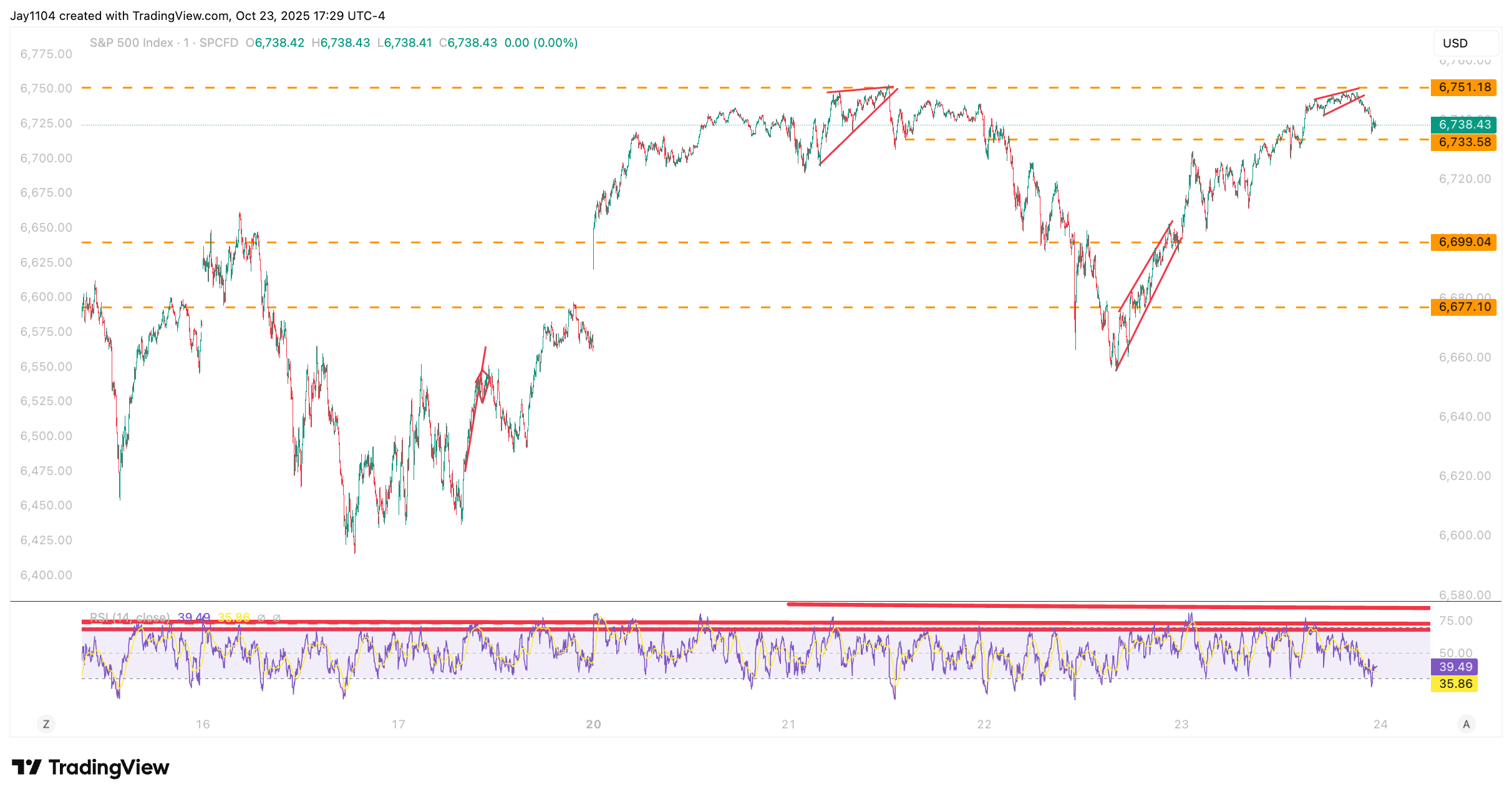
Today is the CPI report, and normally, we think about big macro releases and high implied volatility. But this time, the VIX 1-Day didn’t even reach 14, suggesting there’s a good deal of complacency about the report. In fact, the VIX 1-Day actually finished the day lower.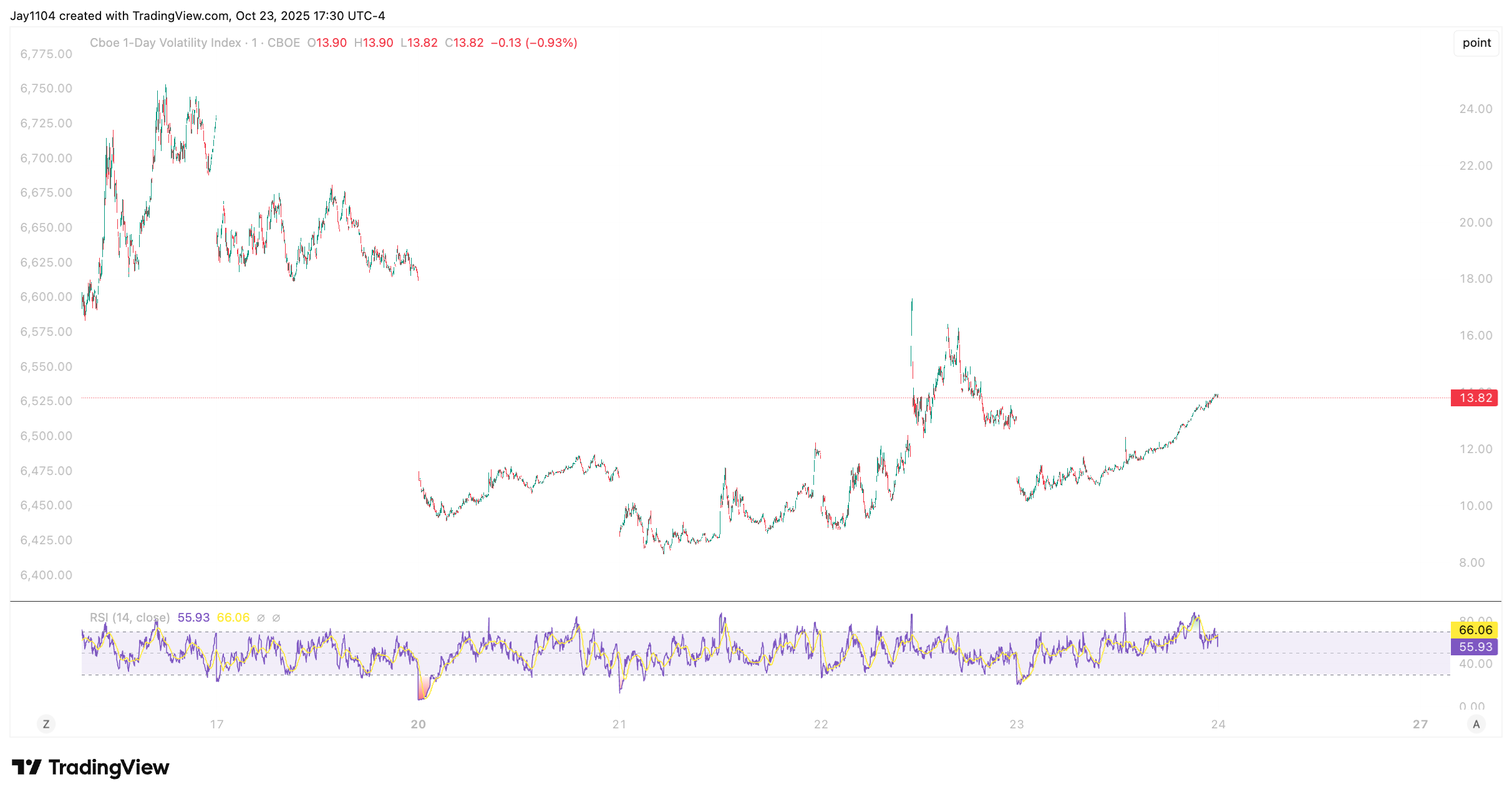
After checking multiple sources, it came as a surprise to see that call IV for the S&P 500 was higher than put IV for today’s OPEX. Perhaps we see a rug pull today? Typically, the market rises as IV falls and puts burn; maybe today the S&P 500 falls as IV drops and calls burn. Or perhaps the play is to jack up IV tonight in the overnight session and push futures lower. Whatever the case, it looks like a setup to me—but of course, I’m speculating.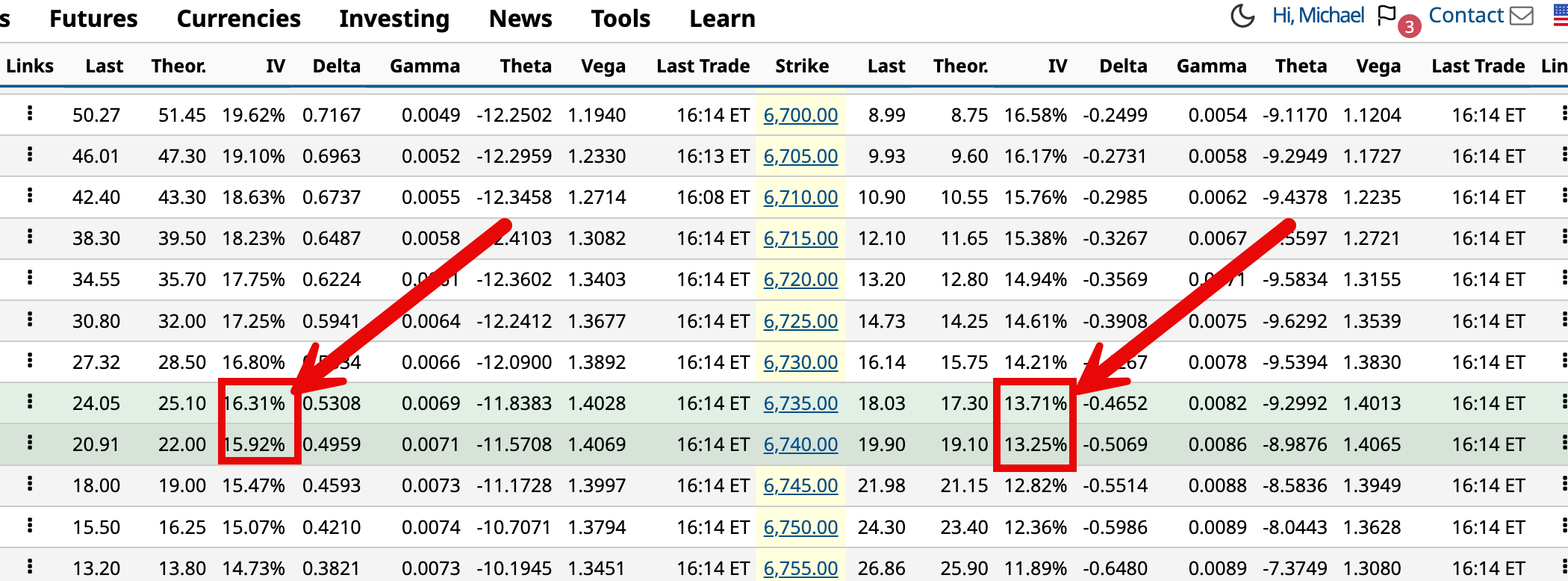
(BARCHARTS)
On Thursday, we also saw both the dispersion index and correlations decline, although the dispersion index fell more. That means the spread between the dispersion index and the 3-month correlation index narrowed while the S&P 500 rose — a clear divergence and another warning signal.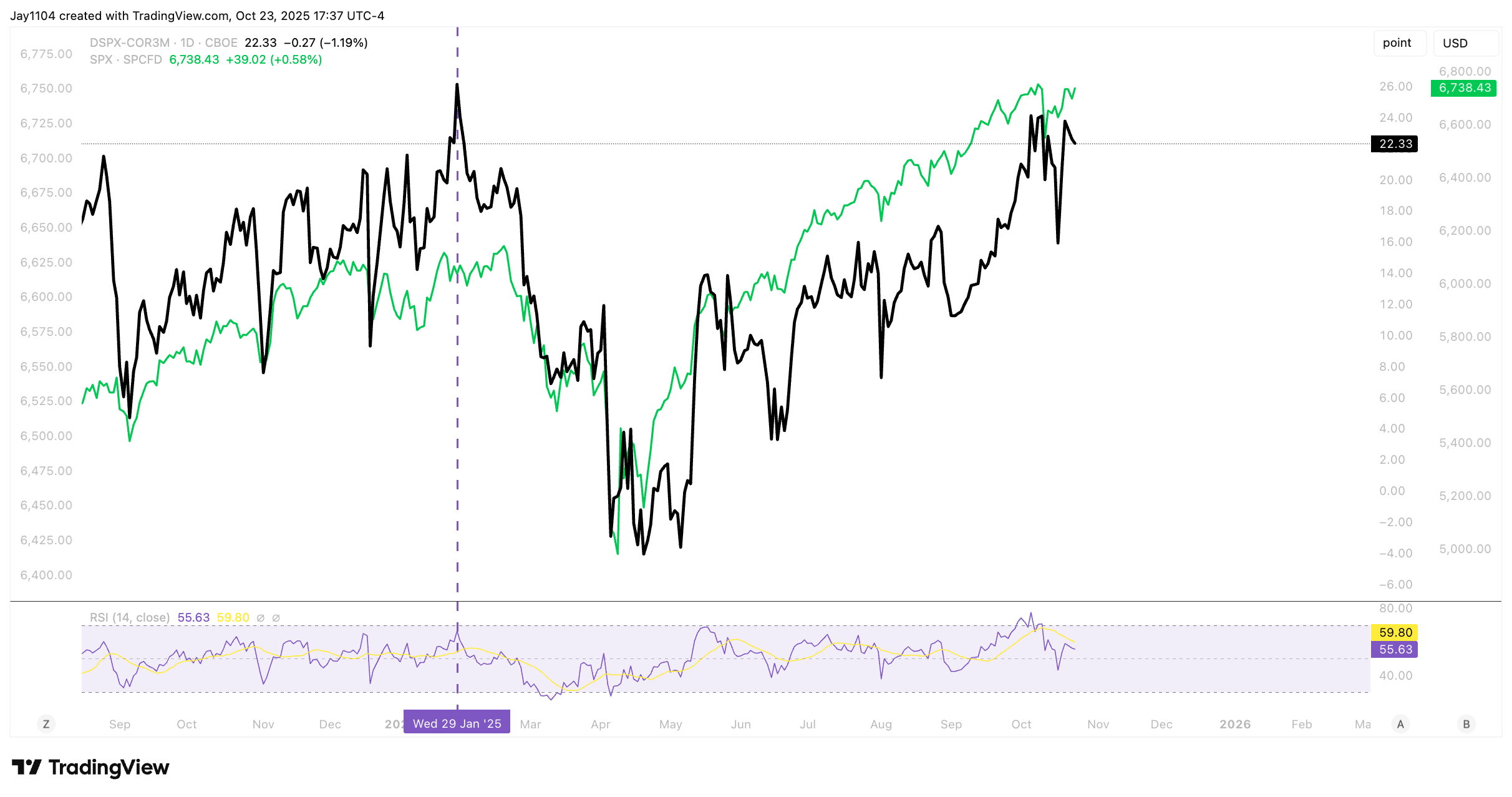
Additionally, as earnings season progresses, we’re seeing the S&P 500 Constituent Volatility Index decline — and it’s likely to keep falling next week as more companies report results. That means the spread mentioned above will continue to contract, which should lead to a lower S&P 500 index.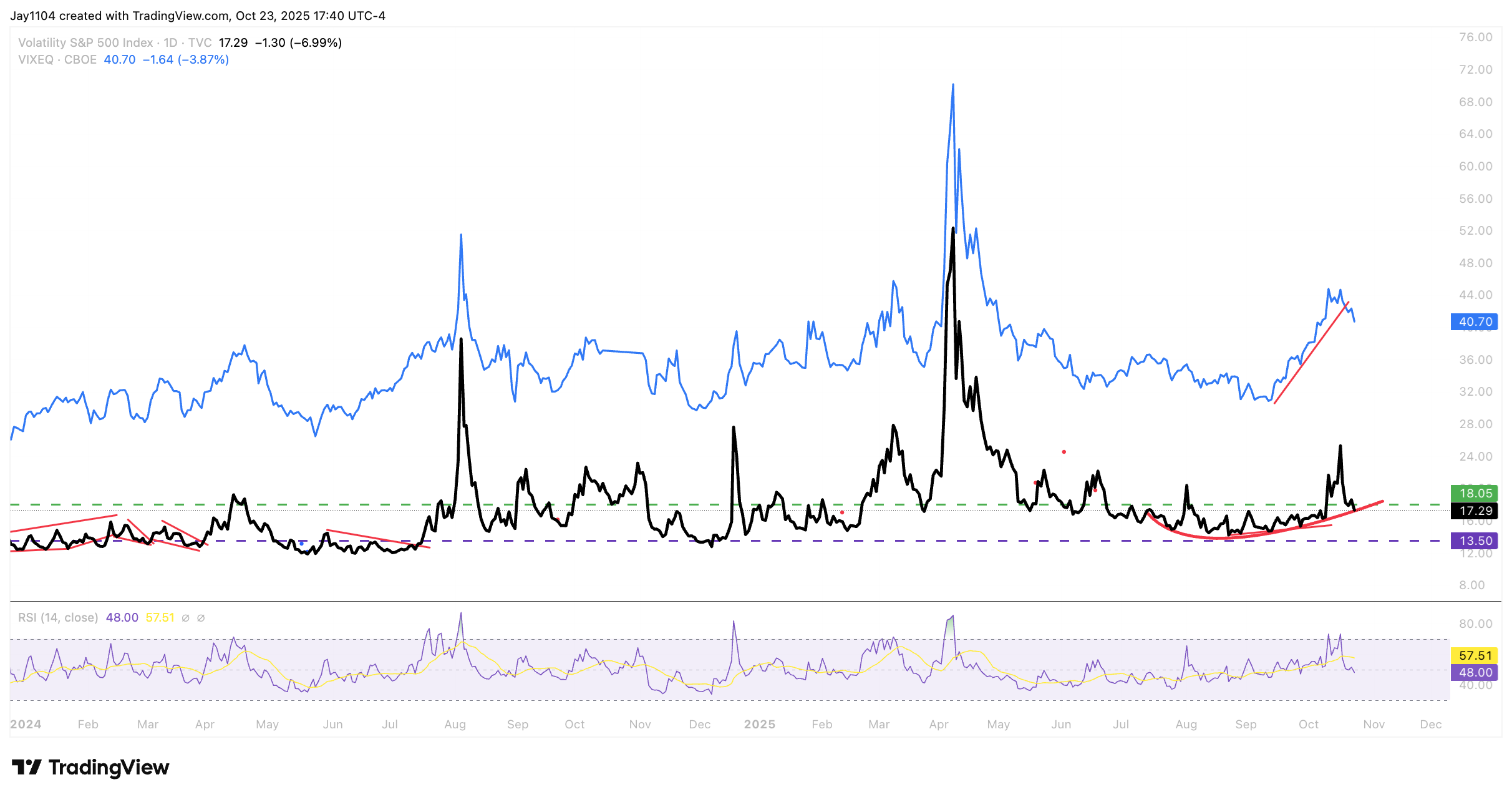
With Thursday being the Treasury settlement date, the average overnight repo rate rose to 4.26%, which will likely push SOFR higher today. Next week, overnight rates could climb even further, with about $100 billion in settlements due.